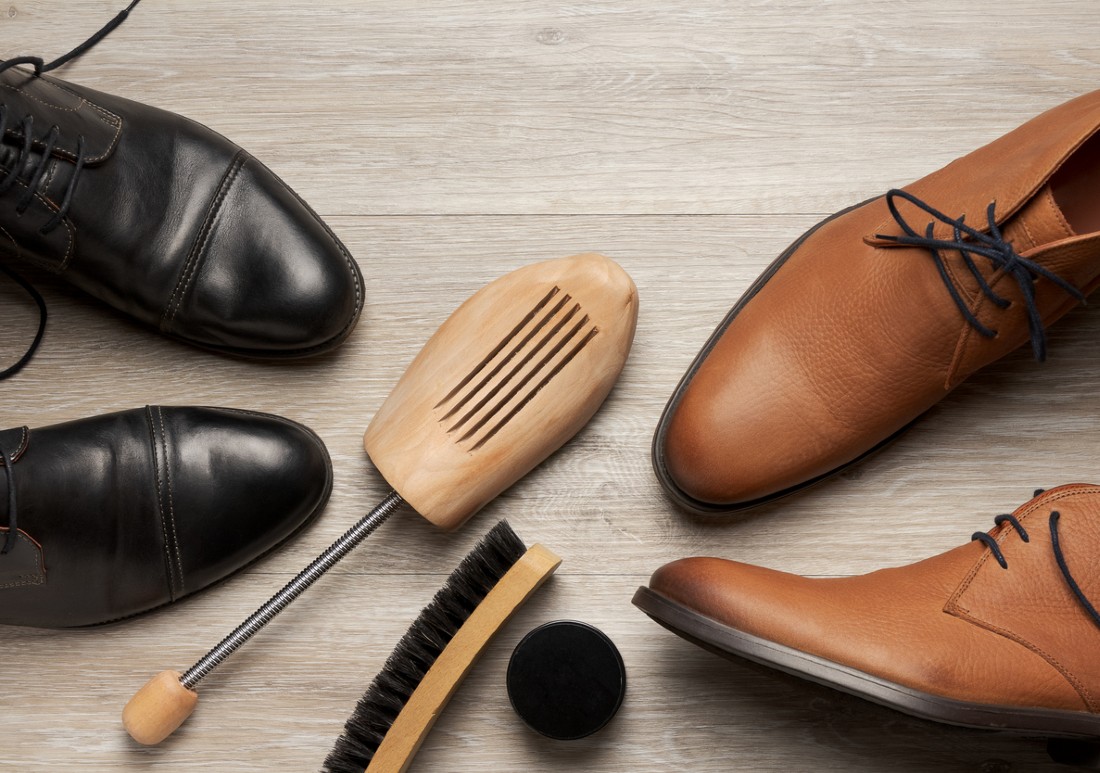How Shoe Trees Can Preserve Your Shoes

For shoe lovers out there, we have both good and bad news. A shoe tree is sadly not a tree that grows or even displays shoes. The good news is, however, that a shoe tree will prolong the life of your footwear, keeping them crease-free and odour-free for longer.
What Is a Shoe Tree?
Shoe trees look a little like an ancient shoemaker’s crafting tool. They are foot-shaped wooden blocks that are inserted into a shoe when it’s not being worn. Plastic versions are also available. They were initially popularized in the early 1900s, but like other inventions during that time (such as the teabag, windscreen wiper, and vacuum cleaner), shoe trees are by no means a gadget reserved for your grandparent’s closet.
Shoe trees have a block-shaped front toe area and either a peg or fully formed heel part that extends to the back. Between the toe and heel section, there is generally an adjustable or spring-activated connector to allow a perfect fit once placed inside the shoe.
Benefits of Using Shoe Trees
It seems like an odd practice, but there are many great reasons you’d want to put wooden blocks in your shoes when they’re not on your feet. Initially thought to be for men’s dress shoes, shoe trees are, in fact, ideal for sneakers, boots, ladies’ shoes, and any footwear made from moisture-sensitive materials such as leather and suede.
Shoe trees help to maintain your shoes’ original shape and reduce creases, which inevitably make them look aged and worn. When it comes to odour elimination, cedarwood ones are the only effective models. Its plastic version will help keep your shoe’s shape but will not assist with odours. Cedarwood shoe trees are pricier but well worth it considering the benefits.
Whether you’re exercising vigorously, taking a walk, or attending work meetings, your feet sweat to various degrees. Although you’d like to think your gorgeous toes are exempt from sweating, they are not. If you’re walking in snow or rain, your shoes will also get wet. The moisture gets trapped inside the lining of the shoe, which results in odours, mould, and faster deterioration. Leather shoes can also become cracked over time and shrink slightly.
Construction work boots, hi-top sneakers, leather shoes, and hiking boots can be especially hard to air on the inside. Cedar is naturally porous and thus absorbs moisture and odours from the interior while keeping its shape and size.
Another benefit of shoe trees is that they can slightly stretch the toe area of the shoe if you need a little extra wiggle room. Forget about wearing-in your new shoes and getting blisters while you do so. Some shoe trees have adjustable toe areas which allow you to gently stretch the front of shoes that feel too narrow.
Shoe trees also allow for easier shoe polishing. When they are inserted, they hold a firm shape, which makes it much easier to polish evenly and efficiently.
How to Choose the Top Shoe Tree?
If the only reason you want a shoe tree is to hold your shoe shape and prevent creases, budget-friendly options in plastic will do the job quite well. If you want odour elimination benefits, choose unvarnished cedarwood. If the wood is varnished or polished, the coating blocks the wood’s absorption properties. The porous grain needs to be exposed.
One pair should last you a lifetime. You can lightly sand your wood shoe trees once a year to optimize the absorption capability. Although pine and other timber models are also available, they do not have the same absorption properties and won’t be very effective in this regard.
Shoe tree sizes generally come in extra-small to extra-large as opposed to regular shoe sizes. When ordering your pair, look for a sizing chart to make sure you get the best fit.
Ideally, you should be alternating shoes and not wearing the same pair two days in a row. Place your shoe trees in the pair that is taking a break from your feet and reap the benefits of long-lasting odourless footwear.